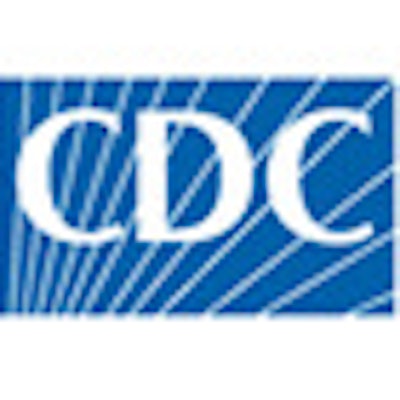
A new report from the U.S. Centers for Disease Control and Prevention (CDC) is once again putting the country's oral health disparities in the spotlight.
The report, issued May 31 by the CDC's National Center for Health Statistics, found that while the presence of tooth decay has declined over the last two decades, more than one in every five Americans still suffers from untreated caries.
The report used data from the National Health and Nutrition Examination Survey for 2005-2008 to assess the prevalence of untreated caries, existing dental restorations, dental sealants, and edentulism in the U.S. by age, race/ethnicity, and poverty level.
"Although prevalence of dental caries has been declining in the U.S., the magnitude of the decline has varied across different population groups during the past two decades," the authors wrote. The prevalence also varied by age, they noted.
For example, the caries rate has remained relatively steady among all age groups, with teenagers having the lowest prevalence. Among youngsters ages 5 to 11, 20% had untreated cavities, while 13% of those ages 12 to 19 had untreated cavities. Those ages 20 to 44 had the highest rate of untreated cavities, 25%, although this trend gradually decreased among older age groups to 20% for adults age 65 and older.
The report also revealed that untreated dental caries varied by race/ethnicity and poverty level. The prevalence of untreated caries was nearly twice as high for non-Hispanic black persons (34%) compared with non-Hispanic white persons (18%) in 2005-2008. It was also significantly higher for both non-Hispanic black and Mexican-American individuals compared with non-Hispanic white children, adults, and other adults.
Prevalence of untreated dental caries and existing dental restorations in permanent teeth, by sex, race and ethnicity, and poverty level: U.S., 2005–2008
|
|||||||||||||||||||||||||||||||||||||||||||||||||||||||||||||||||||||||||||||||||||||||||||||||||||||||||||||||||||||||||||||||||||||
| 1Reference group 2p < 0.05 Source: CDC/NCHS, National Health and Nutrition Examination Survey, 2005–2008. |
|||||||||||||||||||||||||||||||||||||||||||||||||||||||||||||||||||||||||||||||||||||||||||||||||||||||||||||||||||||||||||||||||||||
Other findings in the report include the following:
- For children and adolescents living in poverty, 25% had untreated dental caries, compared with 12% for those living at 200% of the poverty level or higher.
- Dental sealant prevalence was significantly lower for those living below 100% of the poverty level (20%) compared with those living at 200% of more of the poverty level (32%).
- Untreated caries was significantly higher among adults ages 20-64 living in poverty (42%) compared with those living at 200% of the poverty level or higher (17%).
- While tooth loss has been declining, nearly 23% of adults age 65 and older were found to be edentulous.
- More non-Hispanic white and Mexican-American adults had retained all of their permanent teeth compared with non-Hispanic black adults.



















